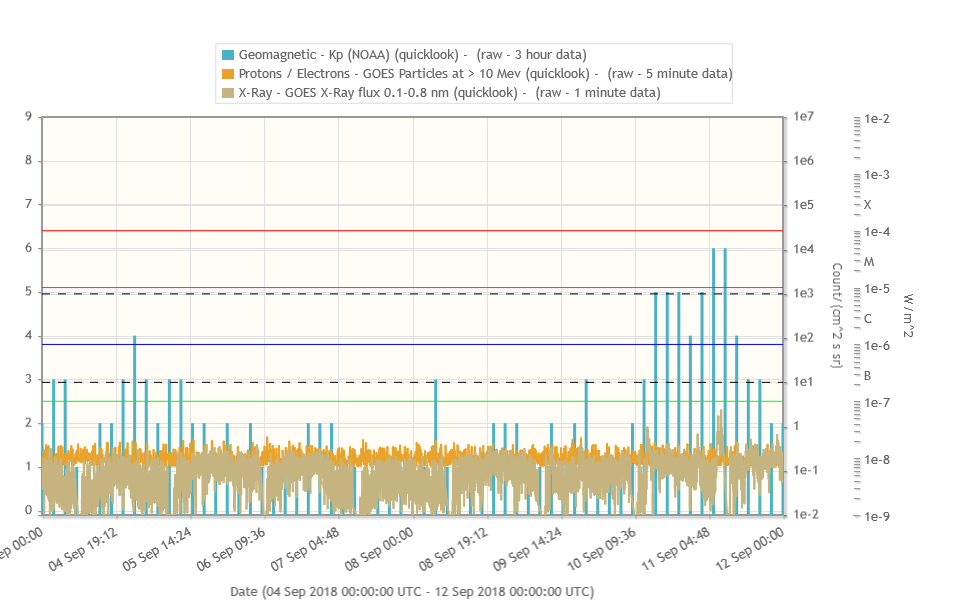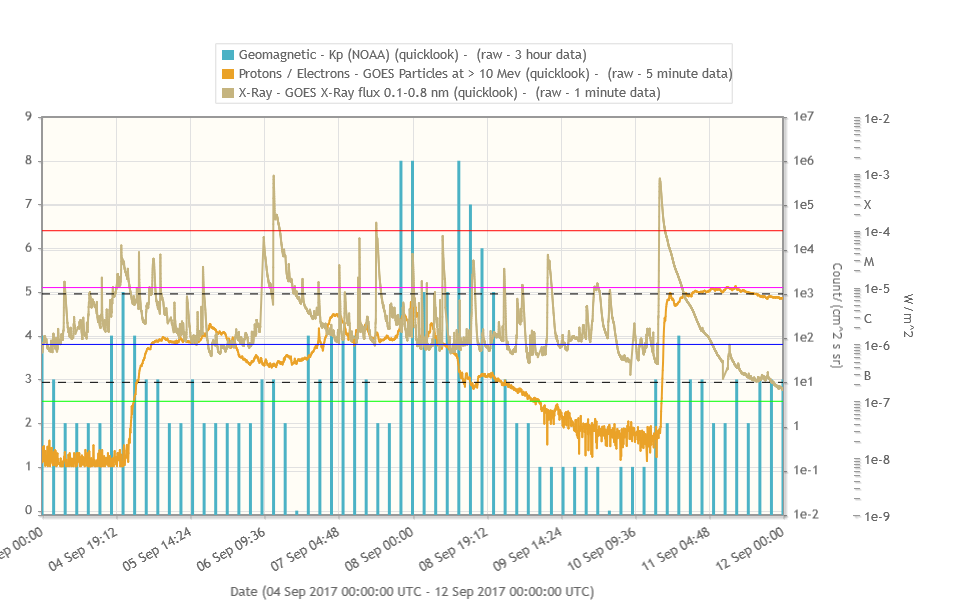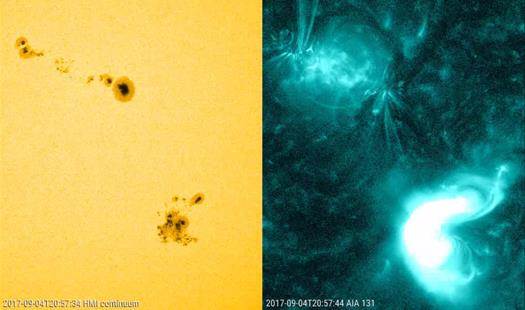Solar activity was very low last week (04-11 September 2018), with just a single and small sunspot group, no flaring at all, and usually quiet to unsettled geomagnetic conditions. Only by 10 and 11 September, the geomagnetic activity picked up slightly with minor to moderate storming (Kp = 5 - 6) reported by the various K indices. The graph underneath was created with STAFF and shows the evolution of the x-ray flux (GOES), the proton flux (GOES) and the Kp index for this rather uneventful period.

What a difference with just one year ago, when in the same week (04-11 September 2017 - graph underneath), there was the sudden appearance of complex sunspot region NOAA 2673 which produced no less than 26 M-class ("medium") and 4 X-class ("eXtreme") flares -including the two strongest flares of the entire solar cycle 24-, as well as the 4th strongest proton event of SC24 -including the (only!) second Ground Level Enhancement-. Earth experienced a severe geomagnetic storm (Kp = 8), one of just a handful of storms during SC24 that reached this level. It made the space weather community scramble to analyse all the events and evaluate the effects on the earth environment, not in the least because the succession of strong flares hampered HF communications during relief efforts in the Caribbean in the wake of Hurricanes Irma and Jose (Redmon et al., 2018).

You can relive this exciting period with the various news items, summaries and movies that have been published on the STCE website.
- 05 September: Weather in space is picking up
- 07 September: The Sun is throwing a party!
- 11 September: Earth under attack
- 21 September: NOAA 2673's hidden secrets revealed
- 06 December: Reappearance
- The STCE newsletters of 15 and 22 September.
- The space weather highlights of 2017.







